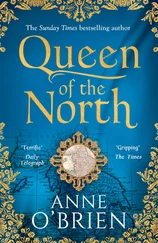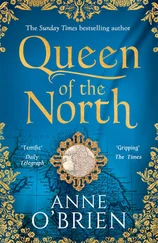By August 1669 the Queen Mother’s own health was causing concern, but her death on 10 September came as a surprise. Anne was taken in by her aunt Henrietta, who was married to King Louis XIV’s younger brother, Philippe Duc d’Orléans. When Anne joined the nursery at Saint Cloud, its other occupants were her seven-year-old first cousin Marie Louise – who grew up to become Queen of Spain and died young – and a baby girl, born a few weeks earlier, who would later marry the Duke of Savoy.
The Duchesse d’Orléans was far from robust, and on 20/30 June 1670 she died after a sudden collapse. There were dark rumours that she had been poisoned by her husband, although there can be little doubt that natural causes were to blame. Certainly the Duc was not greatly grieved by his loss, but he did take a meticulous interest in ensuring that his wife was mourned in accordance with court etiquette. When the Duchesse de Montpensier came to offer her condolences she was surprised to see that the Duc had fitted out not only his eldest daughter but also five-year-old Anne in miniature court mourning costumes, complete with long trains of purple velvet. The Duchesse found this absurd, but quite apart from the fact that children love dressing up, it is unlikely that Anne minded. As an adult she too would take such matters seriously. Jonathan Swift declared that she was ‘so exact an observer of forms that she seemed to have made it her study, and would often descend so low as to observe in her domestics of either sex who came into her presence whether a ruffle, a periwig or the lining of a coat were unsuitable at certain times’. Mourning rituals were important to her, and so was protocol, leading the Duchess of Marlborough to complain that Anne’s mind was so taken up with ‘ceremonies and customs of courts and such like insignificant trifles’ that her conversation turned chiefly ‘upon fashions and rules of precedence’. 29
The English officially accepted the French autopsy findings stating that the Duchesse had not been a victim of foul play, but it was judged best to bring Anne home without delay. Accordingly, Lady Frances Villiers was sent with her husband to escort Anne to England. Before she left France the child was presented with a pair of diamond and pearl bracelets from Louis XIV, the monarch who would later become her greatest adversary. 30
Following her return to England on 23 July 1670, Anne was judged ‘very much improved both in her constitution and personal accomplishments’. For a time she ‘appeared to acquire a healthful constitution of body’, but she did suffer occasional relapses, and in 1677 was reported to be ‘ill of her eyes again’. Her vision remained defective and as an adult she would try to remedy it by consulting oculists such as William Read, an itinerant tailor who recommended drinking beer in the morning to hydrate the brain, and who concocted an eyewash of sulphur, turpentine, vivum, and honey of roses. She suffered less than her sister Mary, whose letters abound with complaints of being plagued by ‘sore eyes’ which became particularly bad if she read or wrote by candlelight. 31
Anne’s ailment had left her slightly disfigured. Abel Boyer noted that she had acquired ‘a contraction in the upper lids that gave a cloudy air to her countenance’, indicating she had a slight squint. This made her look ill-tempered, creating an unfortunate impression. The Duchess of Marlborough declared that Anne’s features appeared set in a ‘sullen and constant frown’, and Anne herself was conscious that her face had a naturally grim expression. In 1683 she told a friend who thought she was displeased with her, ‘I have sometimes when I do not know it, a very grave look, which has made others as well as you, ask me if I was angry with them, … Therefore do not mind my looks for I really look grave and angry when I am not so’. 32
Meanwhile Anne’s mother was in poor physical condition with an ‘illness, under which she languished long’. This was probably cancer of the breast, for the fact that upon her death ‘one of her breasts burst, being a mass of corruption’ suggests that she had a tumour there. 33
The Duchess of York’s spiritual condition afforded equal grounds for concern. By this time, both of Anne’s parents had ceased to be firm believers in the Anglican faith. James had experienced a crisis of conscience in early 1669 and had begun secret discussions with a Catholic priest, but continued to attend Anglican services. Later that year the Duchess also began to gravitate towards Rome. She later recalled that until this point she had been ‘one of the greatest enemies’ the Catholic Church had, but reading The History of the Reformation by the Protestant divine, Peter Heylyn, had the unexpected effect of forcing her to re-examine her beliefs. After enduring ‘the most terrible agonies in the world’, she was ‘fully convinced and reconciled’ to the Catholic Church in August 1670. James felt inspired by the manner in which his wife’s hostility to the Roman faith had unexpectedly crumbled, and this memory would later encourage him to believe that the most unlikely candidates were ripe for conversion. In particular he clung to the hope that his younger daughter Anne’s ostensibly unshakeable commitment to the Anglican Church would prove as fragile as her mother’s. 34
Well aware that if her conversion became public she ‘must lose all the friends and credit I have here’, the Duchess of York tried to keep it secret. Inevitably, however, her failure to take communion attracted attention. In December 1670 the King took the matter up with his brother, who admitted his wife was a convert. James promised he would take great care to conceal this, but as the Duchess’s health worsened, her refusal to permit her Anglican chaplains to pray with her left little doubt that she had forsaken the English Church. Appalled by reports that his daughter had succumbed to the lure of Rome, her father wrote from abroad expressing horror at her readiness to ‘suck in that poison’. He warned her that her conversion would bring ‘ruin to your children, of whose company and conversation you must look to be deprived, for God forbid that after such an apostasy you should have any power in [their] education’. 35
The Duchess of York would not lose custody of her children because she was an unfit mother; instead, she would be parted from them by death. On 9 February 1671 she gave birth to a daughter, who lived less than a year. After that the Duchess’s illness entered its final phase, and ‘came at last to a quicker crisis than had been apprehended’. ‘All of the sudden she fell into the agony of death’ and her last hours proved dreadful, ‘full of unspeakable torture’. 36
The Duchess had secretly received Catholic last rites, but pious Anglicans lamented that she had rejected the consolations of true religion and died ‘like a poor wretch’. Having died on Friday 31 March 1671 the Duchess ‘was opened on Saturday, embalmed on Sunday and buried’ the day after that. Gilbert Burnet stated coldly that ‘the change of her religion made her friends reckon her death a blessing rather than a loss’. One of her maids of honour noted ‘None remembered her after one week; none sorry for her. She smelt extremely, was tossed and flung about, and everyone did what they would with that stately carcase’. Court mourning for her was curtailed so as not to interfere with celebrations for the King’s birthday. 37
The decade since the Restoration had been fraught with loss for the Duke of York as ‘hardly a year passed without some sensible mortification, as loss of children, mother, wife, sister’. 38Apart from her older sister, Anne, aged six, was left bereft of all female members of her immediate family. Her grandmother, mother, and aunt had all been intelligent, vivacious women, and perhaps if they had lived longer they could have encouraged Anne to be less introverted. As it was, although her sister Mary was a chatterbox, Anne developed into a chronically shy child, and all her life was painfully inarticulate.
Читать дальше












